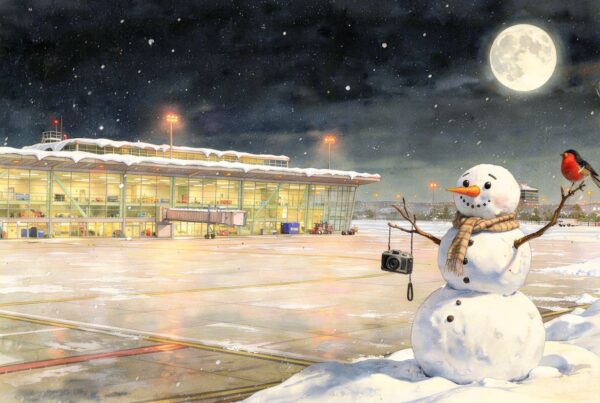Our friends at OPMAS put together this useful Myth-Busting lowdown on the process for “Temporary Admission” of aircraft within the EU. We saw it, we liked it, and so here it is for our OPSGROUP members!
There are still several myths concerning the usage of the Temporary Admission (TA) procedure when flying within the EU. Common to all these myths is the idea that TA limits operators when flying on internal EU trips with great consequences if not followed, but this is often incorrect, outdated or misunderstood.
What’s Temporary Admission?
Temporary Admission (hereafter TA) is meant to allow EU outsiders to be able to roam freely within the EU for a certain period. “Outsiders” means that the aircraft is owned, registered, operated and based outside the EU (all criteria must be fulfilled). Read the short story on Temporary Admission.
Myth #1: Temporary Admission cannot be used when carrying EU passport holders as passengers
This myth is busted because:
- The EU Commission has – numerous times – stated that these restrictions are not meant to restrict having EU residents onboard as passengers. The restrictions are meant for the pilots who are, in customs terms, seen as the real user of the aircraft, meaning that there are NO RESTRICTIONS for carrying EU passengers. Thus, there is no need to appoint a main passenger or have a so-called authorization letter onboard.
- The idea of a main passenger, authorization letter, and other strange demands when using TA has no foundation in the Union Customs Code. It is based on a wrong interpretation or outdated information.
Myth #2: Temporary Admission cannot be used for commercial flights, such as Part 135
This myth is busted because:
- The EU Commission approved Part 135 traffic as correct use of TA in 2014.
- Internal traffic was also removed as a restriction for TA in 2016 with the introduction of the Union Customs Code (UCC). The paragraph was originally intended to limit commercial traffic but has been removed for many years now.
- The requirement for Traffic rights (also called charter permits) is often mentioned as another obstacle when using TA, yet traffic rights have absolutely nothing to do with the process of obtaining TA or full importation. It is strictly an aviation regulator issue.
- US aircraft flying Part 135 may need to obtain traffic rights on some internal EU legs, but this is independent of the TA or full importation status. Any fully EU-imported US Part 135 aircraft will also need to obtain the exact same traffic rights. Having a fully EU-imported aircraft instead of a TA aircraft will not improve the situation. Full importation does not grant an aircraft “better” traffic rights than aircraft flying under TA or EU-registered aircraft.
Myth #3: The owner must be onboard or be present within the EU
The myth is busted because:
- It has earlier been clarified that the owner is not needed to be present onboard or within the EU in the typical Part 91/135 scenario when flying within the EU. This paragraph in the Union Customs Code is meant to regulate a completely different scenario.
- This issue can however be a bit tricky as aviation structures are complicated and not always easily or correctly understood by customs on the ramp, so operators should always ask a competent customs agency to approve the structure in advance and outline the correct understanding in the specific case.
Myth #4: Aircraft flying under Temporary Admission will most likely have problems when flying to Cannes, Nice, or Paris-Le Bourget
The myth is busted because:
- Numerous aircraft are flying to these airports and other “dangerous” airports every day using TA and are ramp checked without having any problems because the crew onboard are well-prepared and able to explain and document why the aircraft is eligible to use the TA procedure. We have supported many of these operations, so we know how it works and what it takes.
- Some aircraft encounter problems at these airports, but all known cases are based on operators either not being TA compliant or simply not prepared to prove compliance. These aircraft can remain on the ramp for hours or weeks and sometimes result in a full VAT payment.
There is a lot of noise when TA is discussed
It seems like some presenters have forgotten to read or understand the changes made to the Union Customs Code for the last many years as we see a tendency to, deliberately or not, denigrate the use of TA in favor of full importation using arguments that it is impossible or dangerous. In fact, the opposite is true.
The TA procedure has become a very well-defined customs procedure
Please note that TA can be used to fly privately, corporately, and commercially within the EU without any problems and with EU-resident persons onboard, if applied correctly. Moreover, since 2014 the TA procedure has become a very well-defined customs procedure, especially for corporate and commercial aviation. This is thanks to the huge effort from, e.g., the EU Commission and NBAA.
More advantageous for many North American operators
The option of using TA is sometimes presented as second to full importation, with the latter presented as the only “safe and possible” option for North American operators. This is clearly NOT supported by the EU Commission. On the contrary, the use of full importation will be an extra burden and place risks on the owner and user of a corporate aircraft, also when flying outside the EU. This can be eliminated by using TA. In fact, the TA procedure is often more advantageous for many North American operators compared to full importation due to the limited scope of liability and the wide scope of use.
Thanks to OPMAS for this article! They provide importation services in relation to the EU; Temporary Admission, full importation for corporate owners and full importation for AOC holders and charter/commercial operators. That’s all they do! They do not charge for an evaluation of the particular set up you have – contact them here.
More on the topic:
- More: ReFuelEU: Europe’s new anti-tankering rules explained
- More: EASA Safety Bulletin on SAF risks
- More: Schengen area expands to almost all EU countries
- More: Noisy New Rule for EU Ops: The EASA Environmental Portal
- More: UK: No more LPV approaches after June
More reading:
- Latest: Venezuela & Caribbean Airspace Update
- Latest: ReFuelEU: Europe’s new anti-tankering rules explained
- Latest: US CBP biometrics: BizAv rollout still unclear
- Safe Airspace: Risk Database
- Weekly Ops Bulletin: Subscribe
- Membership plans: Why join OPSGROUP?











 Get the famous weekly
Get the famous weekly 





